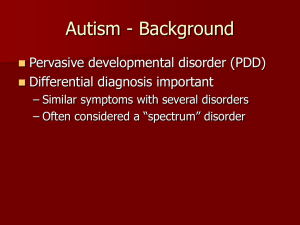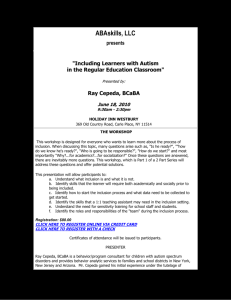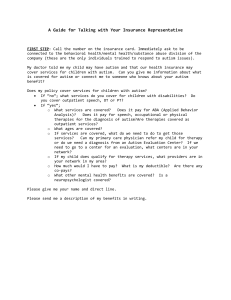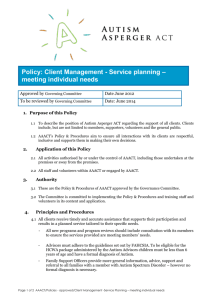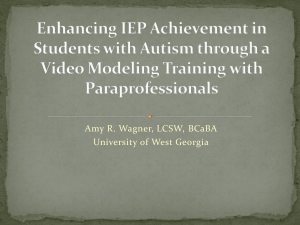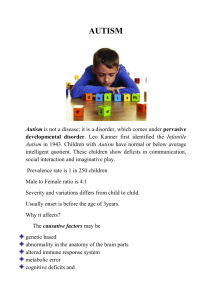Mental Health: A Report of the Surgeon General
advertisement
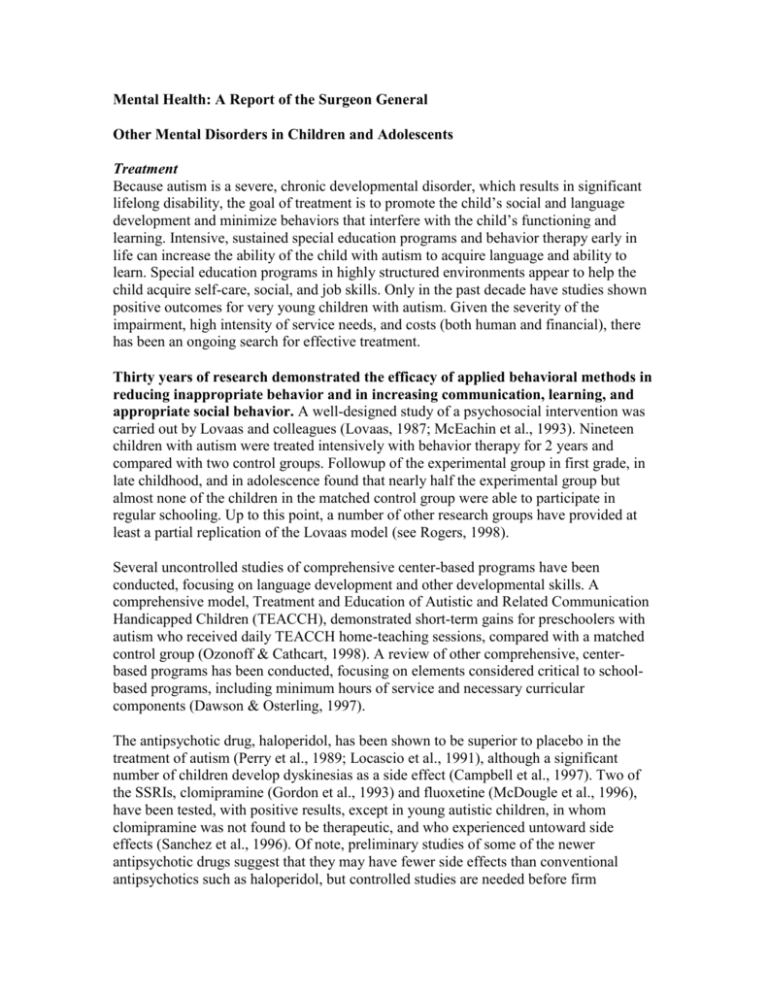
Mental Health: A Report of the Surgeon General Other Mental Disorders in Children and Adolescents Treatment Because autism is a severe, chronic developmental disorder, which results in significant lifelong disability, the goal of treatment is to promote the child’s social and language development and minimize behaviors that interfere with the child’s functioning and learning. Intensive, sustained special education programs and behavior therapy early in life can increase the ability of the child with autism to acquire language and ability to learn. Special education programs in highly structured environments appear to help the child acquire self-care, social, and job skills. Only in the past decade have studies shown positive outcomes for very young children with autism. Given the severity of the impairment, high intensity of service needs, and costs (both human and financial), there has been an ongoing search for effective treatment. Thirty years of research demonstrated the efficacy of applied behavioral methods in reducing inappropriate behavior and in increasing communication, learning, and appropriate social behavior. A well-designed study of a psychosocial intervention was carried out by Lovaas and colleagues (Lovaas, 1987; McEachin et al., 1993). Nineteen children with autism were treated intensively with behavior therapy for 2 years and compared with two control groups. Followup of the experimental group in first grade, in late childhood, and in adolescence found that nearly half the experimental group but almost none of the children in the matched control group were able to participate in regular schooling. Up to this point, a number of other research groups have provided at least a partial replication of the Lovaas model (see Rogers, 1998). Several uncontrolled studies of comprehensive center-based programs have been conducted, focusing on language development and other developmental skills. A comprehensive model, Treatment and Education of Autistic and Related Communication Handicapped Children (TEACCH), demonstrated short-term gains for preschoolers with autism who received daily TEACCH home-teaching sessions, compared with a matched control group (Ozonoff & Cathcart, 1998). A review of other comprehensive, centerbased programs has been conducted, focusing on elements considered critical to schoolbased programs, including minimum hours of service and necessary curricular components (Dawson & Osterling, 1997). The antipsychotic drug, haloperidol, has been shown to be superior to placebo in the treatment of autism (Perry et al., 1989; Locascio et al., 1991), although a significant number of children develop dyskinesias as a side effect (Campbell et al., 1997). Two of the SSRIs, clomipramine (Gordon et al., 1993) and fluoxetine (McDougle et al., 1996), have been tested, with positive results, except in young autistic children, in whom clomipramine was not found to be therapeutic, and who experienced untoward side effects (Sanchez et al., 1996). Of note, preliminary studies of some of the newer antipsychotic drugs suggest that they may have fewer side effects than conventional antipsychotics such as haloperidol, but controlled studies are needed before firm conclusions can be drawn about any possible advantages in safety and efficacy over traditional agents. http://www.surgeongeneral.gov/library/mentalhealth/chapter3/sec6.html#autism

